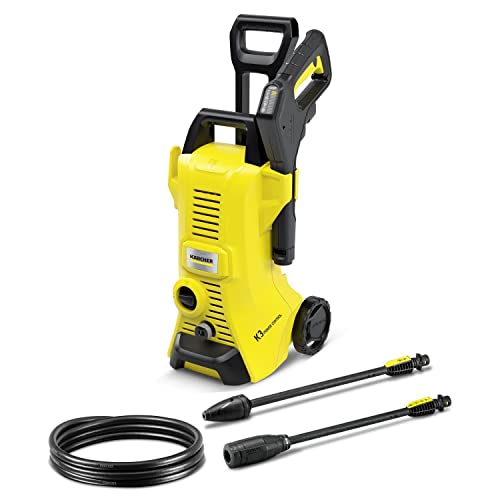How to remove algae from a patio — expert tips to banish the mossy substance for good
Follow this advice from the experts and watch stubborn algae wash away
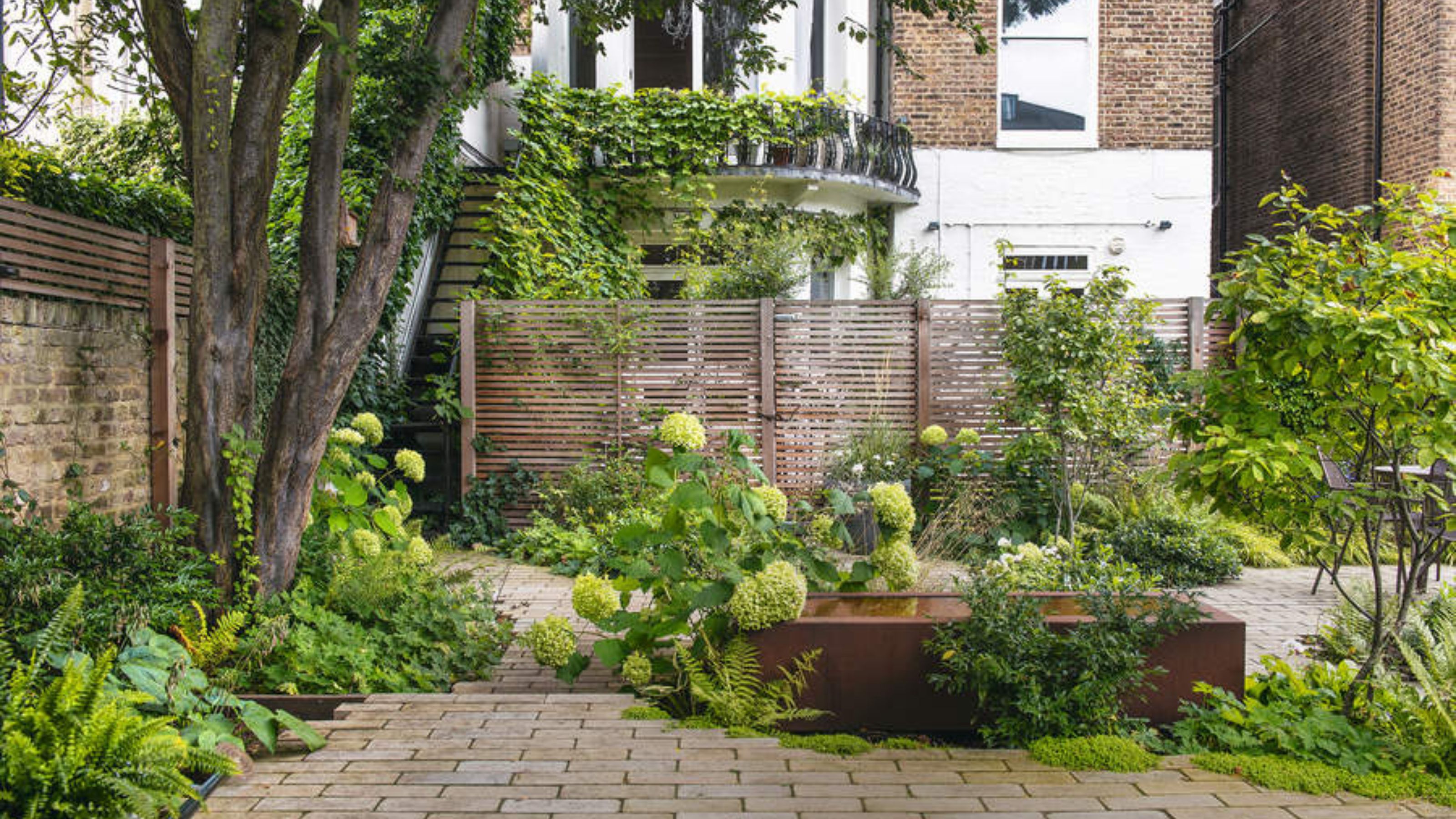

If your patio is currently experiencing an algae problem, you'll be pleased to know that you can banish this slimy substance in just a few simple steps. And once you know how to remove algae from patio, you can stop it from coming back for good with a couple of preventative measures.
Patios are hotspots for algae growth due to the lack of drainage that allows water to pool on the surface. For stubborn algae that's made itself a home on your patio, you'll need to get your hands on a few essentials before you start tackling the problem. The method simply involves applying one of the best patio cleaners (or a natural alternative) and scrubbing it away with water.
But some expert advice around how to remove algae from patio goes a long way. We've put together this easy to follow guide that will tell you everything you need to know about getting your patio algae-free.
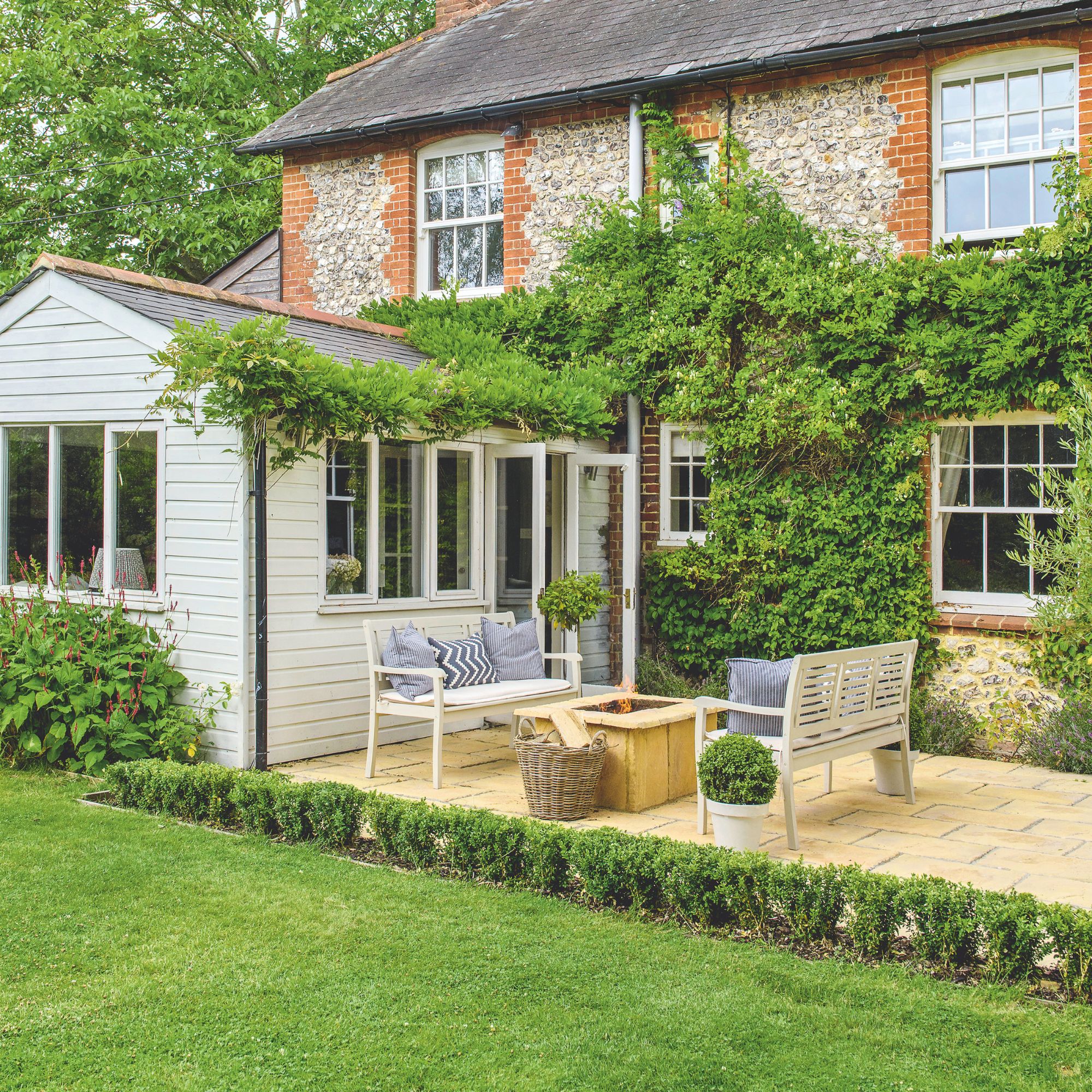
What you'll need
- A stiff bristle brush, like this £9.99 deck scrubber from Amazon
- Pressure washer - we recommend the WORX cordless pressure washer, £199.99 at Amazon
- Or - a watering can or hose for smaller patios
- A cleaning solution, such as the Patio Magic cleaner for £13.99
- Protective gear, like gardening gloves and goggles
Step-by-step
1. Prepare the patio
The first step for how to remove algae from patio is to sweep away dirt, debris and leaves using a stiff-bristled brush.
'This will make the patio easier to work with and allow the cleaning solution to do its job better,' Morris Hankinson, founder and director of Hopes Grove Nurseries says. 'Make sure plants close by are protected and remove all furniture and pots.'
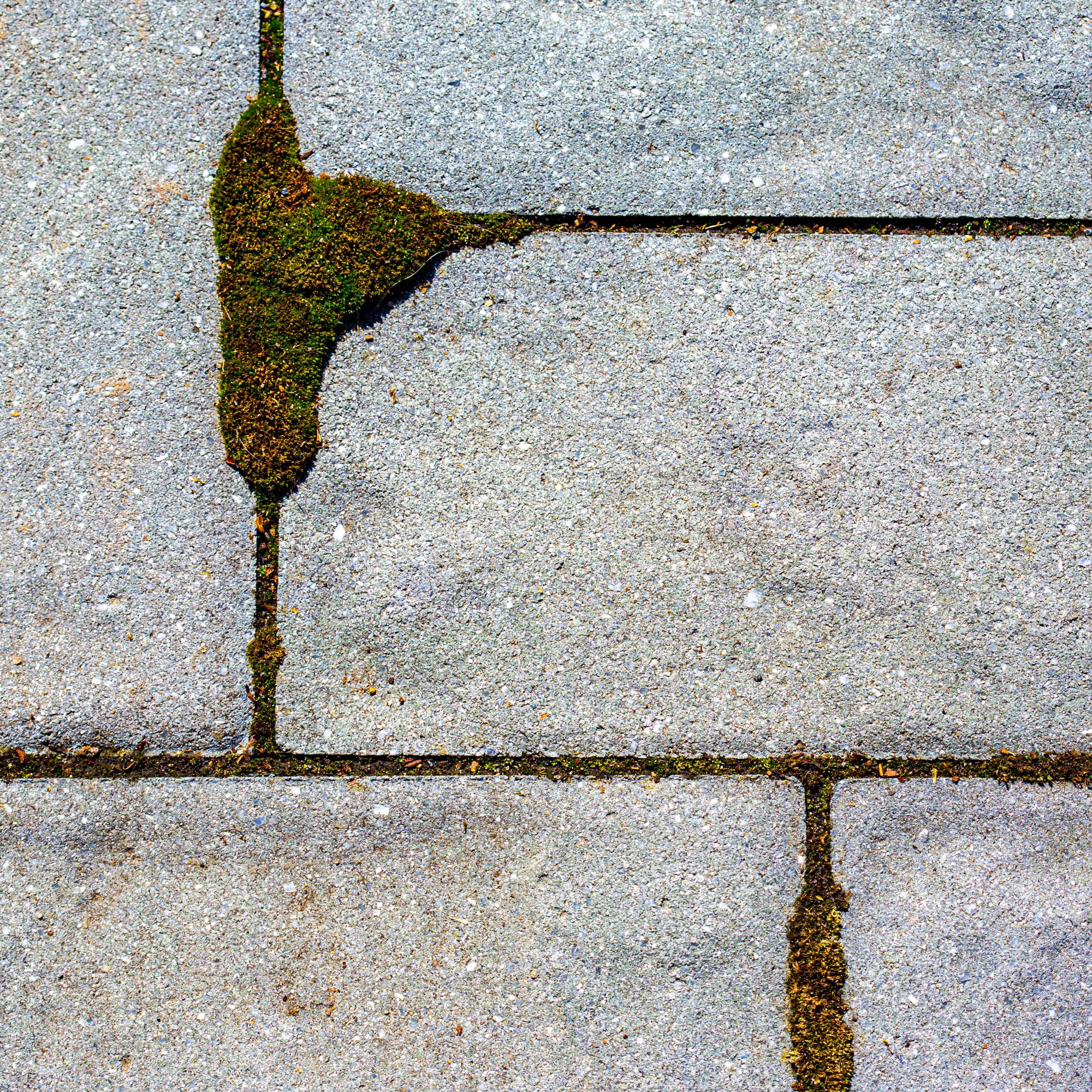
2. Get your safety gear on
'Safety equipment is a must when cleaning a patio to avoid any solution being used from ruining clothes or getting in your eyes and on your skin,' Morris advises.
Before you start cleaning, make sure you're wearing a long-sleeved top and trousers, that you're fine with getting dirty. Protective gloves and goggles might feel a bit extreme, but avoiding getting harsh chemicals on your skin and in your eyes is a must.
3. Apply your cleaning solution
As algae can be quite stubborn, any cleaning solution you use will need to be hard-working. You can try cleaning with white vinegar or bleach, but you may find you need the help of a specially formulated algae cleaner to get the job done. Note that if you're using bleach, you'll need to ensure this doesn't touch any surrounding plants or wildlife.
Check the manufacturer's instructions of the cleaner you're using. It may recommend diluting with water, or applying directly. 'Most solutions will need to be applied to the patio surface and left for at least 20 or more minutes to get to work,' Morris adds.
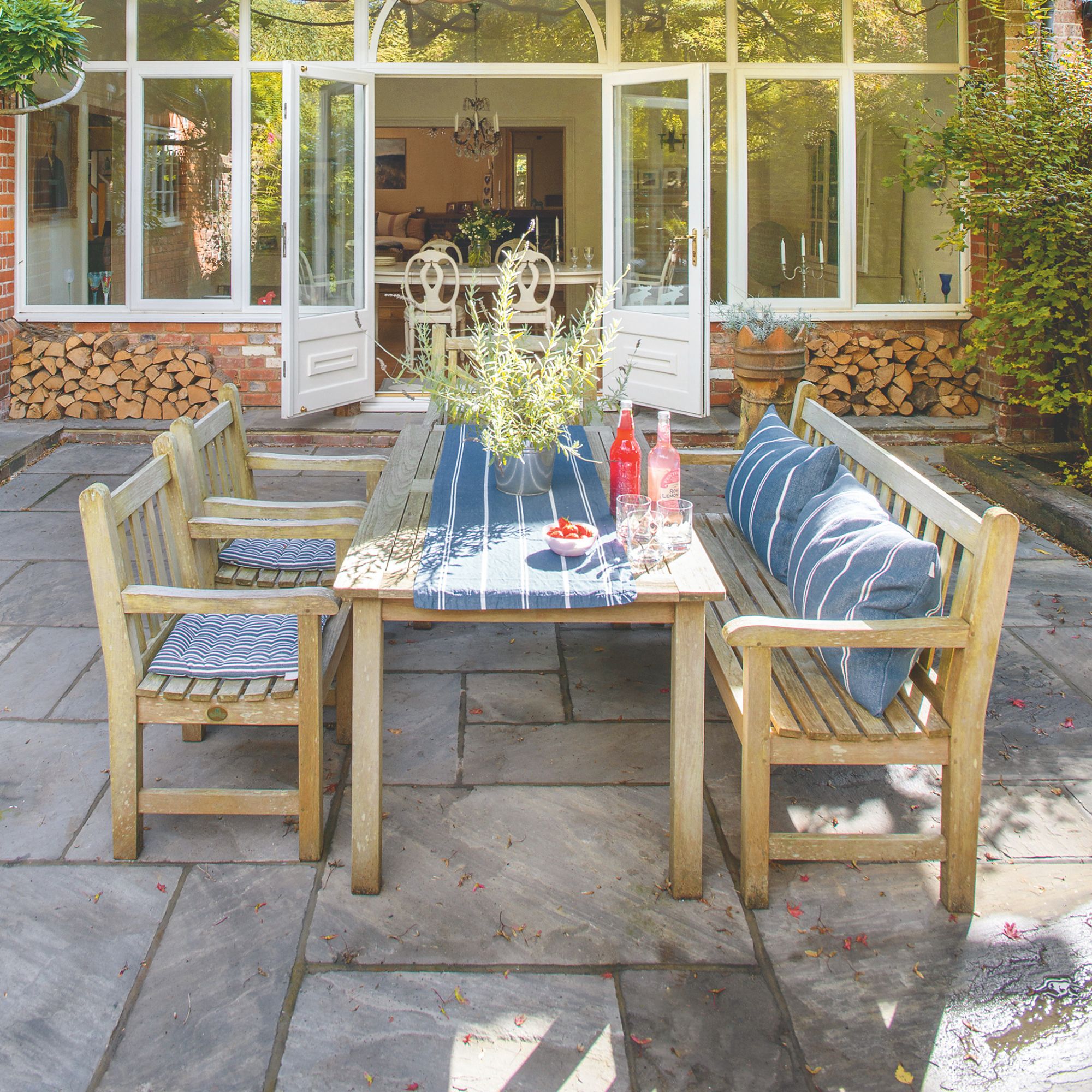
4. Scrub away
If you want to clean a patio without a pressure washer, try using your stiff-bristled brush first. For less stubborn algae that hasn't been there too long, this may be enough to dislodge the slimy film.
'You should easily see how the algae comes away and the solution will be a murky green,' Morris says. 'Scrub as much as you can and then rinse off well with water.'
Use a watering can or a hose to rinse the solution away with water - if some of it has lifted, repeated steps 3 and 4 again to move the rest.
5. Or, use a pressure washer
If the algae doesn't look like it's budging, it may be time to enlist the help of one of the best pressure washers. These are powerful machines that should be able to lift stubborn bits of algae (they're also handy if you're looking to remove black spots from patio too).
It's recommended to use the low-pressure setting on the machine if you're using one, to avoid dislodging the patio slabs. Use the washer to clean away the algae as per the device's instructions.
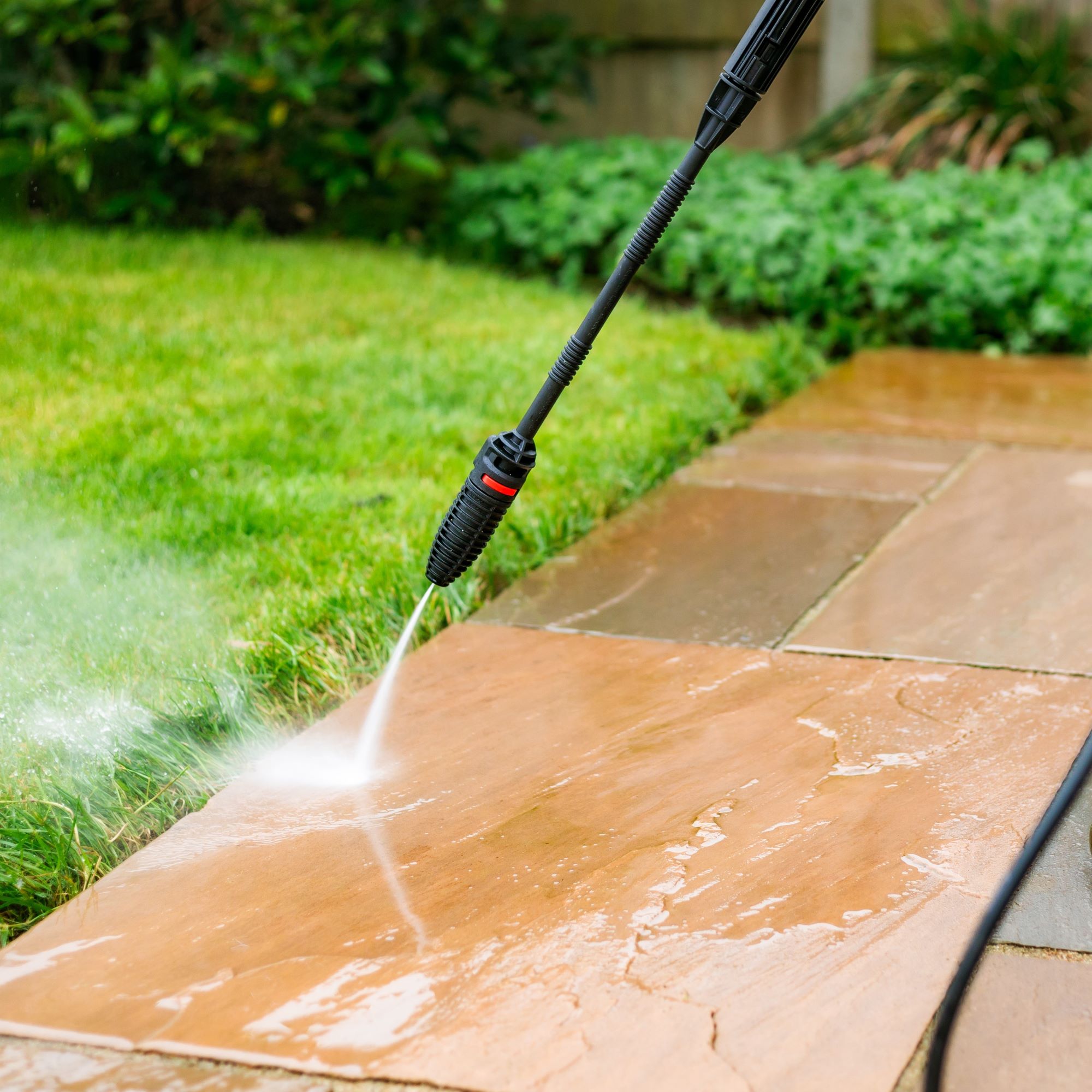
6. Prevention is the best solution
Once you've followed the above steps and removed any lingering algae from your patio, there are some simple things you can do to stop the algae from coming back.
Firstly, ensure you've got good drainage so that large amounts of water don't sit on your patio - this is a recipe for algae growth. And if there's anything that can be trimmed or removed to improve light on the patio, this can help.
'You could also try using a barrier sealant on the slabs,' Morris recommends. 'This will help to ensure algae can’t build up and cause an unsightly patio.'
Patio cleaning essentials
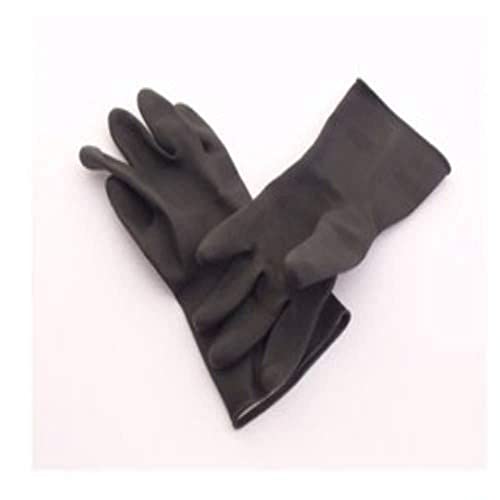
When working with any chemical cleaners, it's recommended to protect your hand with a pair of heavy-duty gloves. These ones from Marigold are ideal for cleaning the patio, and nicely affordable too.
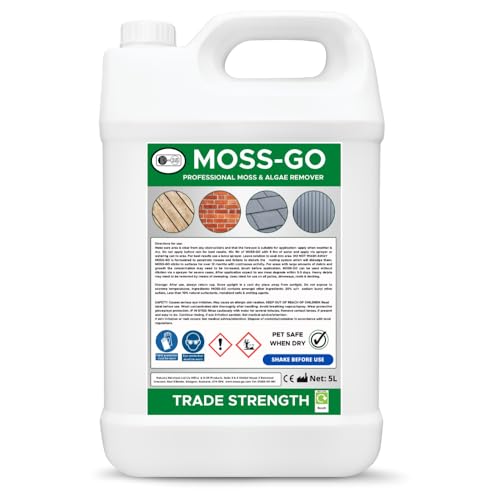
The Moss-Go patio cleaner is one of Amazon's bestsellers, and we're confident it will remove the most stubborn pieces of algae. It's trade-strength, and powerful - follow the manufacturer's instructions when using.
FAQs
Will bleach kill algae?
Yes, bleach will kill algae, but it should be used with caution. 'Bleach won’t just kill algae but also nearby plants and wildlife,' Morris says. 'It can also discolour some patios depending on the material.'
If you are using bleach, it's recommended to dilute this with water so it's not as potent. Wear protective gloves when handling the bleach, and provide any nearby plants with protection as well. It's best to move potted plants away from the area completely, as wind or rain could carry the bleach into places you don't want it to go.
Is bleach or vinegar better to kill algae?
Both bleach and vinegar can be used to kill algae, depending on how much there is. If you prefer to use one of these than a formulated cleaner, trying using white vinegar first.
'Mix equal parts white vinegar and warm water in a spray bottle and apply to the affected area of the patio,' Laura Marsden, cleaning expert at Marigold advises. 'Let it sit for 15-30 minutes to allow the vinegar to get to work, as the acidity will help break down the algae.'
Use a tough-bristled brush to scrub the vinegar solution away, and some of the algae should lift. If you haven't had much success, you can try bleach - but dilute it with water and move any plants from the surrounding area.
Get the Ideal Home Newsletter
Sign up to our newsletter for style and decor inspiration, house makeovers, project advice and more.

Katie has been writing freelance since early 2022, specialising in all things homes and gardens, following achieving a Masters in Media and Journalism. She started out writing e-commerce content for several of Future’s interior titles, including Real Homes, Gardeningetc, Livingetc, and Homes and Gardens. Since then she’s been a regular contributor on Ideal Home’s digital team, covering news topics, how-to guides, and product reviews.
You must confirm your public display name before commenting
Please logout and then login again, you will then be prompted to enter your display name.
-
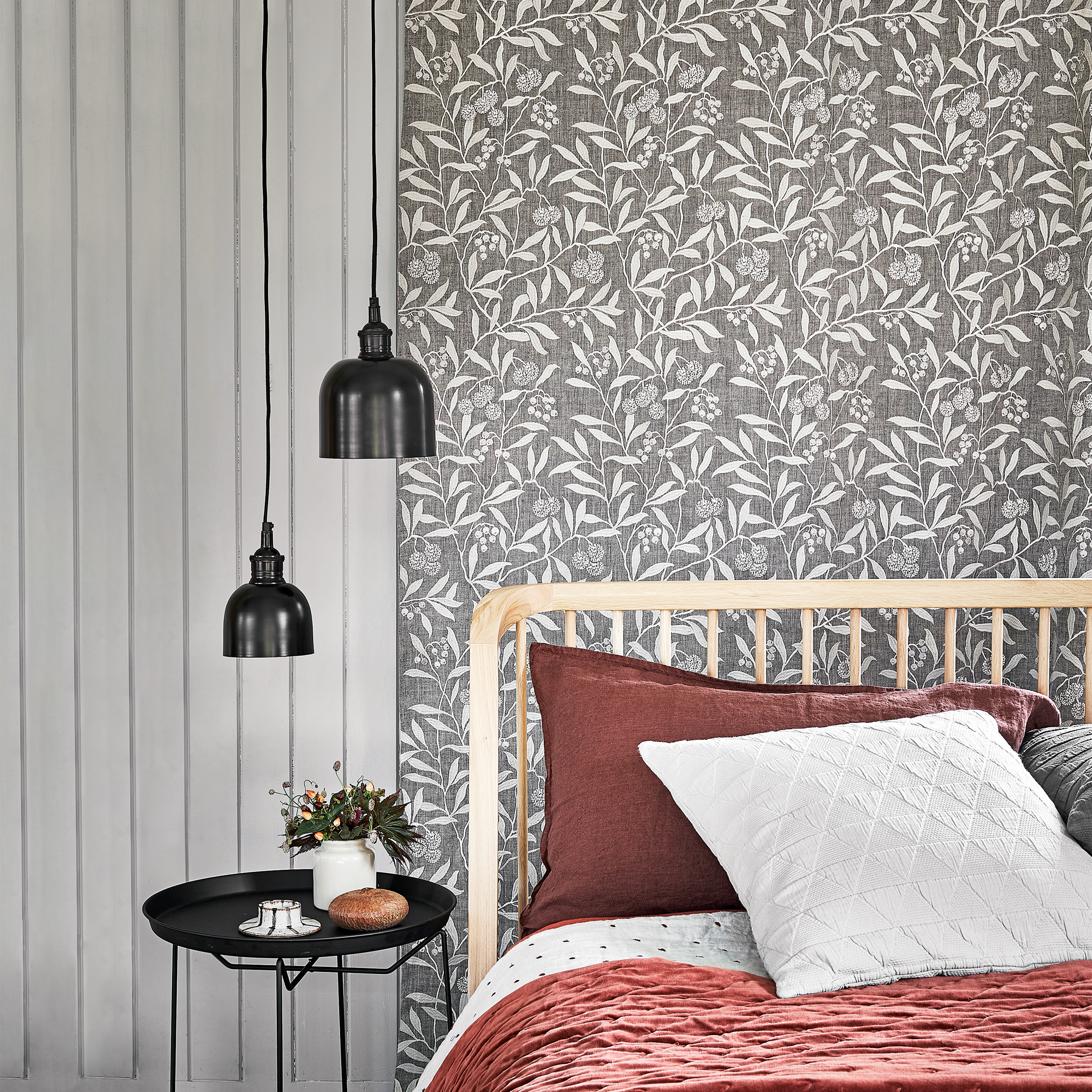 Amanda Holden's maximalist guest bedroom uses a smart decorating trick to make it look bigger
Amanda Holden's maximalist guest bedroom uses a smart decorating trick to make it look biggerInterior experts say it's a masterclass in how to decorate a dormer bedroom
By Amy Lockwood
-
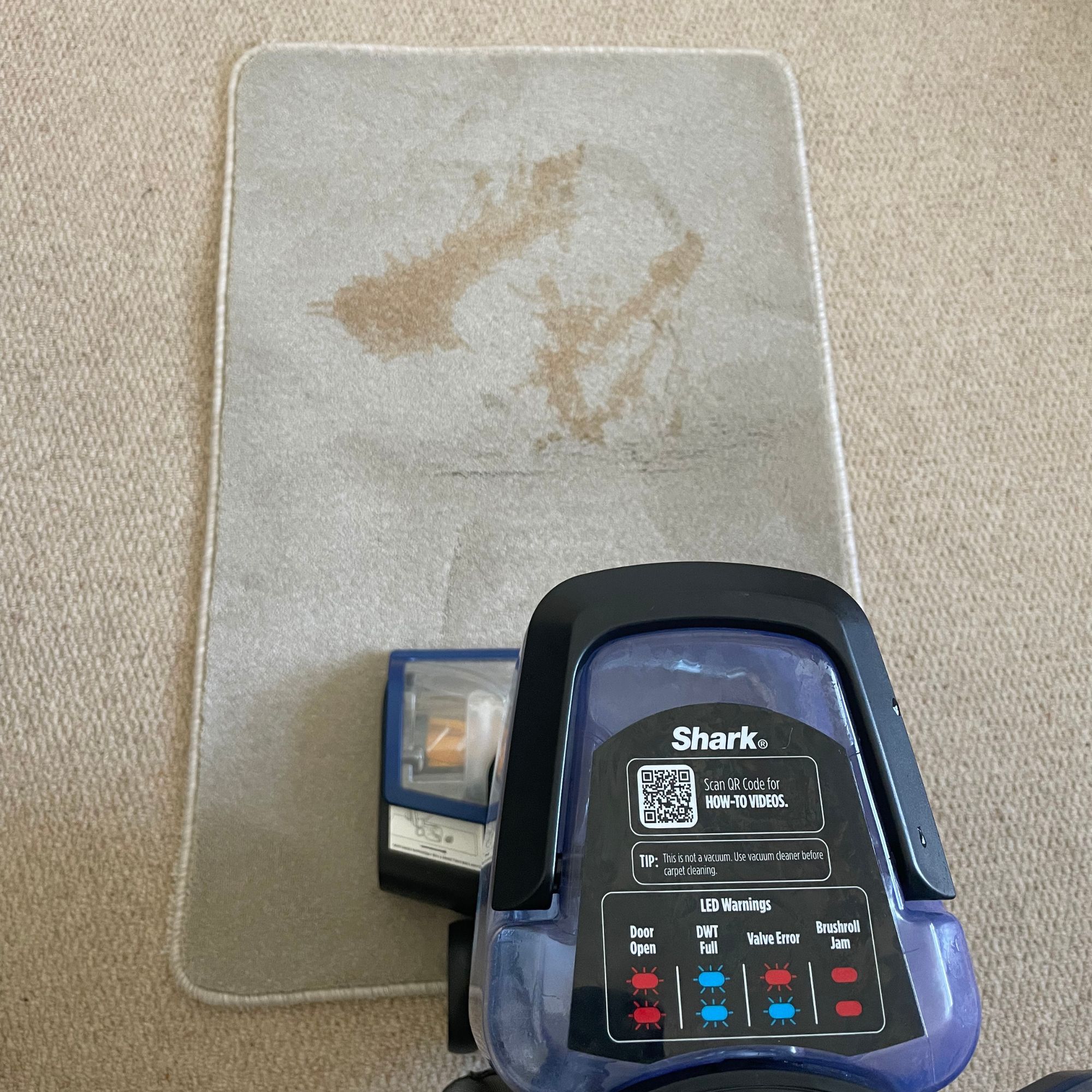 I threw wine, tea and mud on my carpets to test out Shark’s newest carpet cleaner — but after using it, you wouldn’t know
I threw wine, tea and mud on my carpets to test out Shark’s newest carpet cleaner — but after using it, you wouldn’t knowWith the built-in spot cleaner, it's also a game-changer for pet parents
By Lauren Bradbury
-
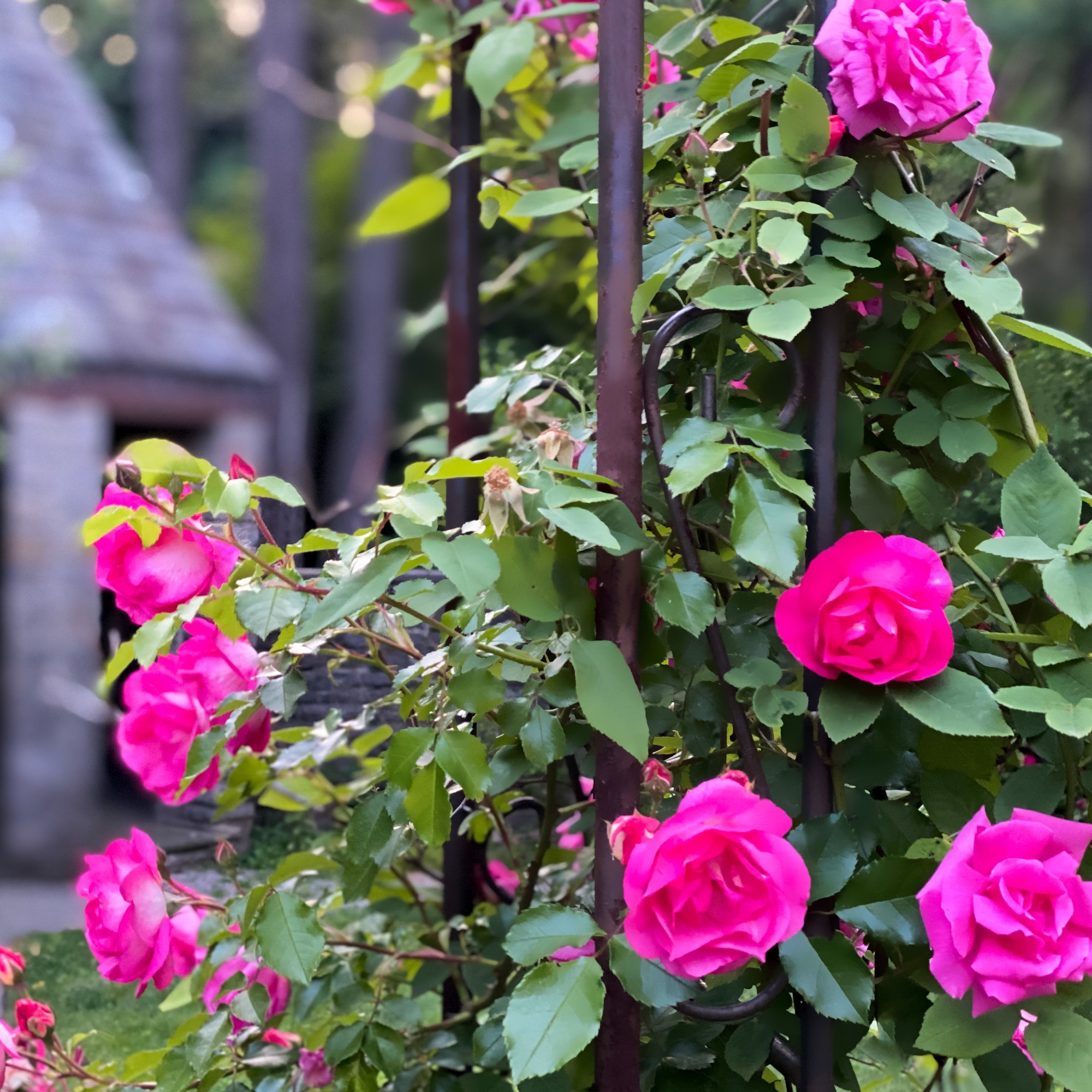 5 of the best climbing plants with pink flowers – the prettiest climbers to trail over fences, walls and pergolas
5 of the best climbing plants with pink flowers – the prettiest climbers to trail over fences, walls and pergolasElevate your garden scheme with easy-to-grow climbing plants in an eye-catching shade of pink
By Lisa Fazzani
